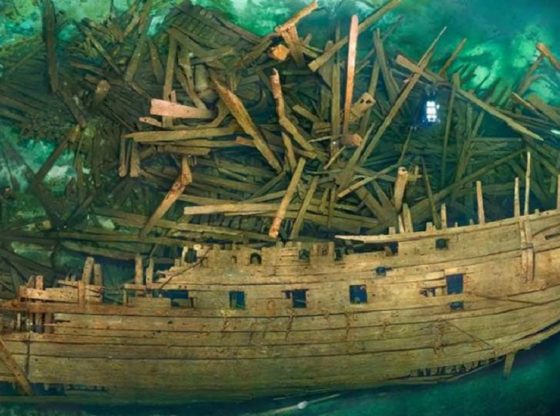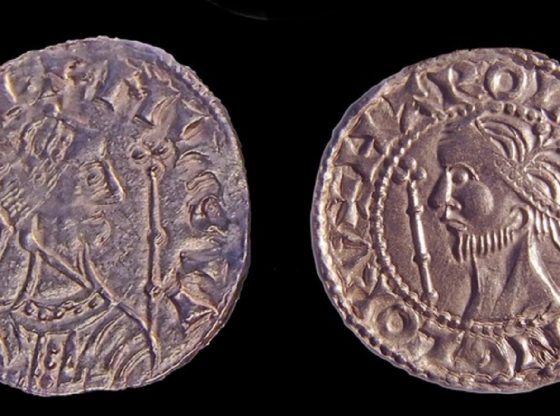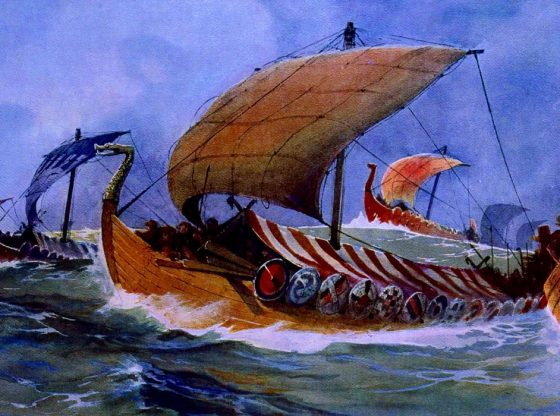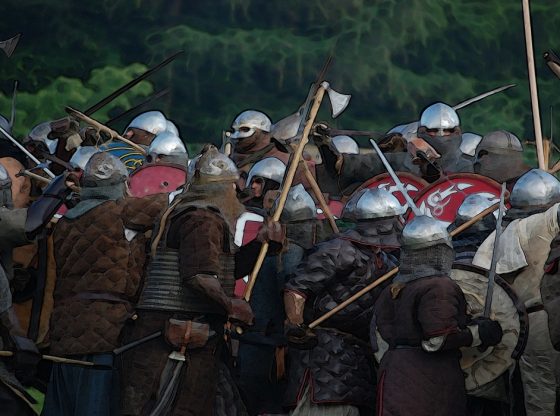
Archaeologists have discovered a Viking ship burial in Norway using ground-penetrating radar that suggests the 20-meter keel and many of its timbers remain well preserved just half a meter below the topsoil.
The Viking longship was buried not far from the Norwegian capital of Oslo. The 20 meter-long longship (65-foot)was covered over more than 1,000 years ago to serve as the final resting place of a prominent Viking king or queen. That makes it one of the largest Viking ship graves ever found.
Just three other intact ship burials have been recorded in the country; the survival of this one is remarkable because the imposing burial mound that once covered it has long since been plowed out. Another mound, Jelle mound, still rises high in the field, and the research has also traced the outlines of at least eight other previously unknown burial mounds that once surrounded it and five nearby longhouses.
“In the middle of the mound, we discovered what is called an anomaly, something that is different from the rest and clearly has the shapes and dimensions of a Viking ship,”
– Knut Paasche, an archeologist at the Norwegian Institute for Cultural Heritage Research (NIKU), told AFP.
The site where the ship grave was found is well-known. A burial mound 10 meters (30 feet) tall looms over the site, serving as a local landmark in the area clearly visible from the highway just north of the Swedish border.
Viking longships were used for both trading and raiding, the latter struck terror across Europe during The Viking Age (793–1066 CE). The ships were precious objects, and ship burials were reserved for high-status individuals. This particular ship would have been dragged onshore from the nearby Oslo fjord. But at some point during the Viking Age, it was the final resting place of someone powerful.











![OpenAI. (2025). ChatGPT [Large language model]. https://chatgpt.com](https://www.illustratedcuriosity.com/files/media/55136/b1b0b614-5b72-486c-901d-ff244549d67a-350x260.webp)
![OpenAI. (2025). ChatGPT [Large language model]. https://chatgpt.com](https://www.illustratedcuriosity.com/files/media/55124/79bc18fa-f616-4951-856f-cc724ad5d497-350x260.webp)
![OpenAI. (2025). ChatGPT [Large language model]. https://chatgpt.com](https://www.illustratedcuriosity.com/files/media/55099/2638a982-b4de-4913-8a1c-1479df352bf3-350x260.webp)








